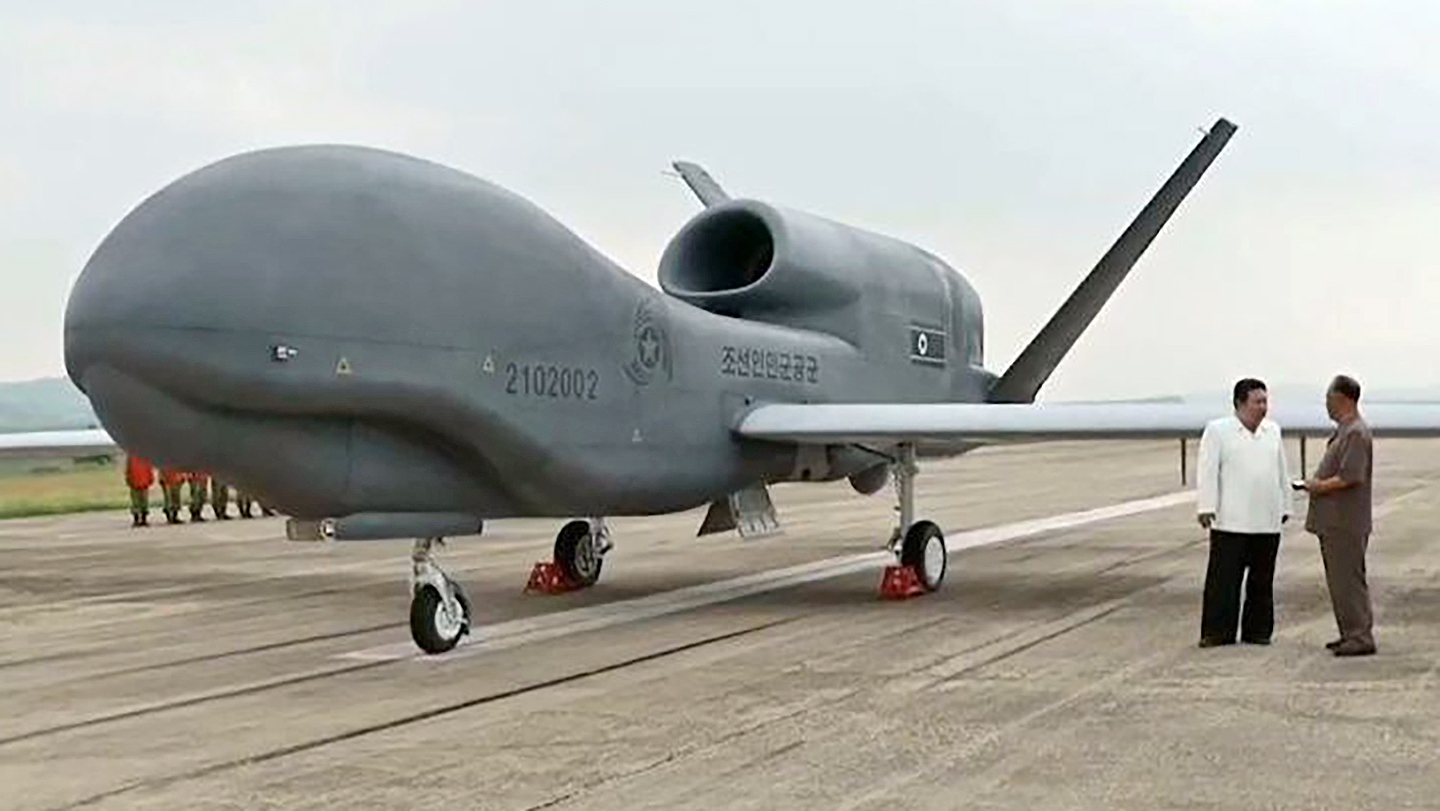Images posted to the Chinese social media platform Weibo appear to be stills from a previously undisclosed inspection by North Korean dictator Kim Jong Un of the country’s most advanced drones. These are almost exact visual copies of the well-known U.S.-made RQ-4 Global Hawk and MQ-9 Reaper unmanned aerial vehicles (UAVs). Sunday, North Korea carried out its long-anticipated test of a solid fuel intermediate range ballistic missile (IRBM), and it had an intriguing payload on top.
According to @RupprechtDeino , who researches China’s military, the drones are the Saetbyol-4, which closely resembles the jet-powered U.S. RQ-4 and the Saetbyol-9, which appears to be very similar to the prop-driven U.S. MQ-9.
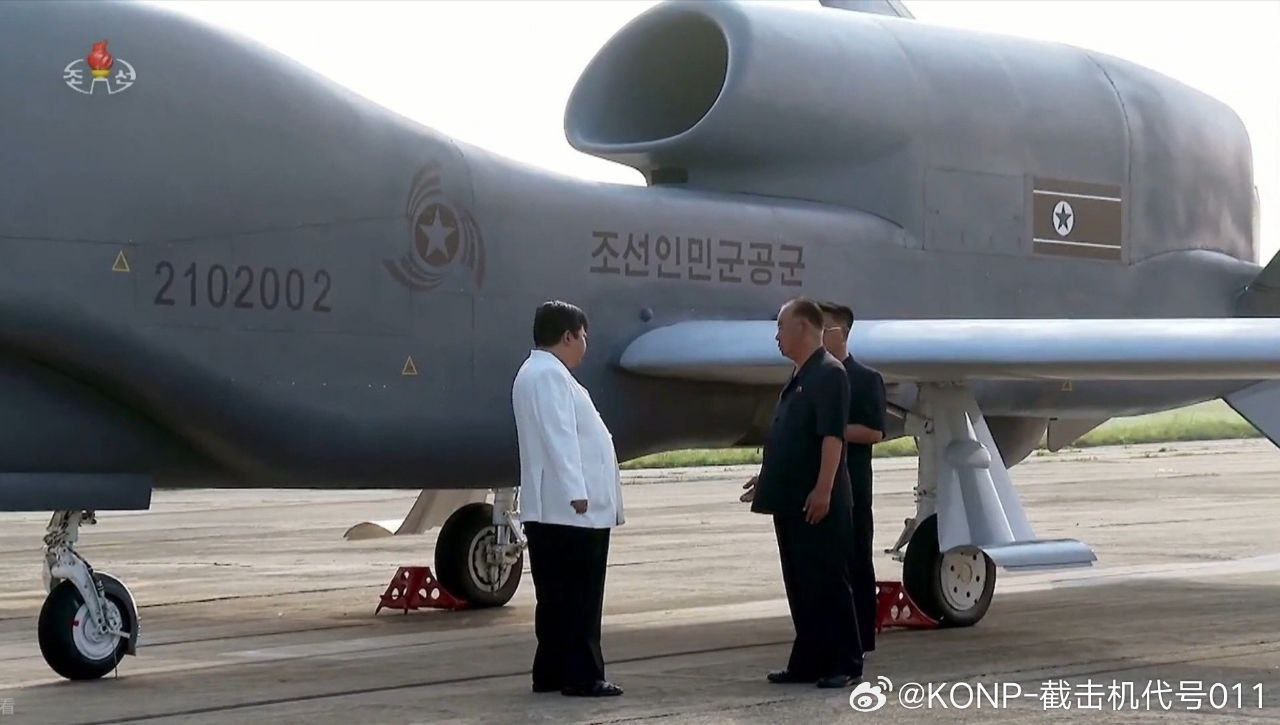
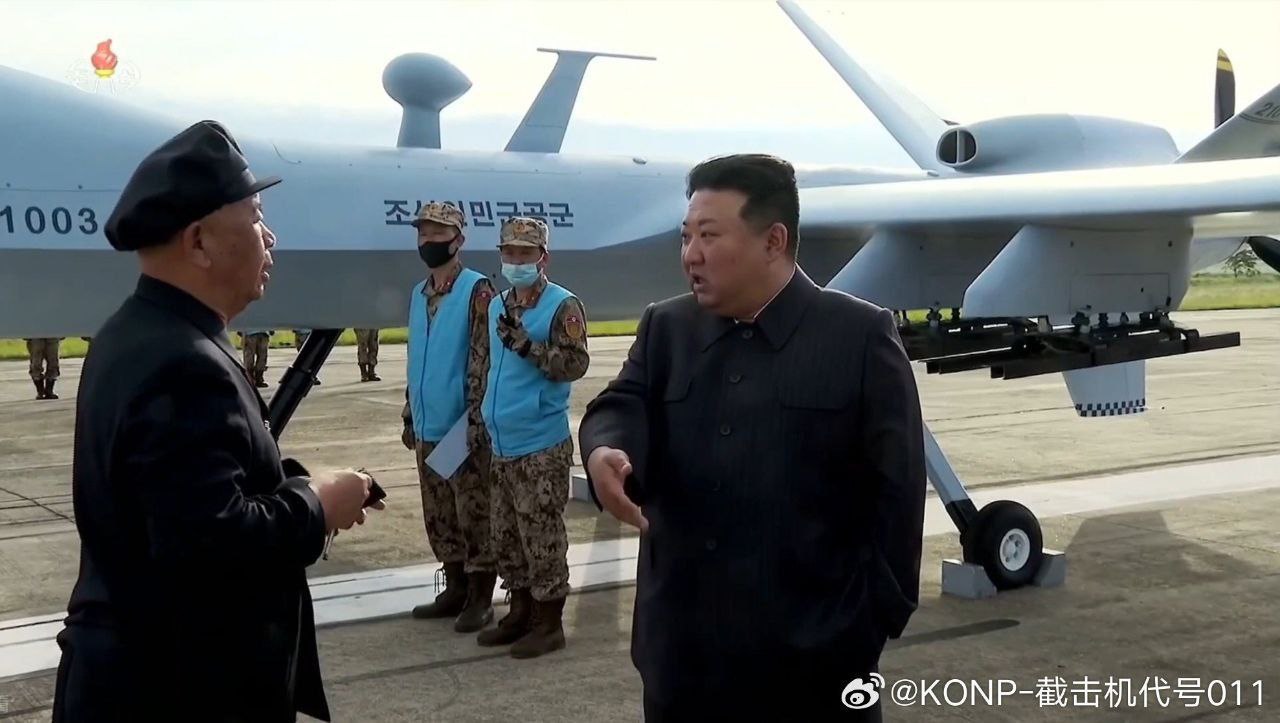
North Korean state media has described the Saetbyol-4 (Morning Star-4) as “a strategic reconnaissance drone,” according to the International Institute for Strategic Studies (IISS). The Saetbyol-9 (Morning Star-9) has been labeled a “multi-purpose attack drone.”
As we initially reported at the time, North Korean state media first unveiled the two drones in July 2023 and provided brief videos showing both of them in flight.
Both were formally revealed during the Weapons and Equipment Exhibition 2023 July 26, 2023, attended by Kim and Russian Minister of Defense Sergei Shoigu. Shoigu was visiting Pyongyang to further military cooperation between the two countries and to secure more North Korean-made armaments for use in Moscow’s war in Ukraine.
As we noted in our original report, the precise capabilities of these North Korean drones was very much unclear and few details have emerged since.
“Next to no details are available of the specifications of the Global Hawk-type drone or even the mission that it’s intended to perform. However, its close resemblance to the RQ-4 series clearly suggests a high-altitude flight profile. Depending on engine performance and other factors, it’s likely expected to fly over longer distances. The RQ-4A has an endurance of more than 30 hours and has an intelligence, surveillance, and reconnaissance (ISR) mission, carrying a variety of sensors including imagery intelligence (IMINT), signals intelligence (SIGINT), and moving target indicator (MTI) sensors.”
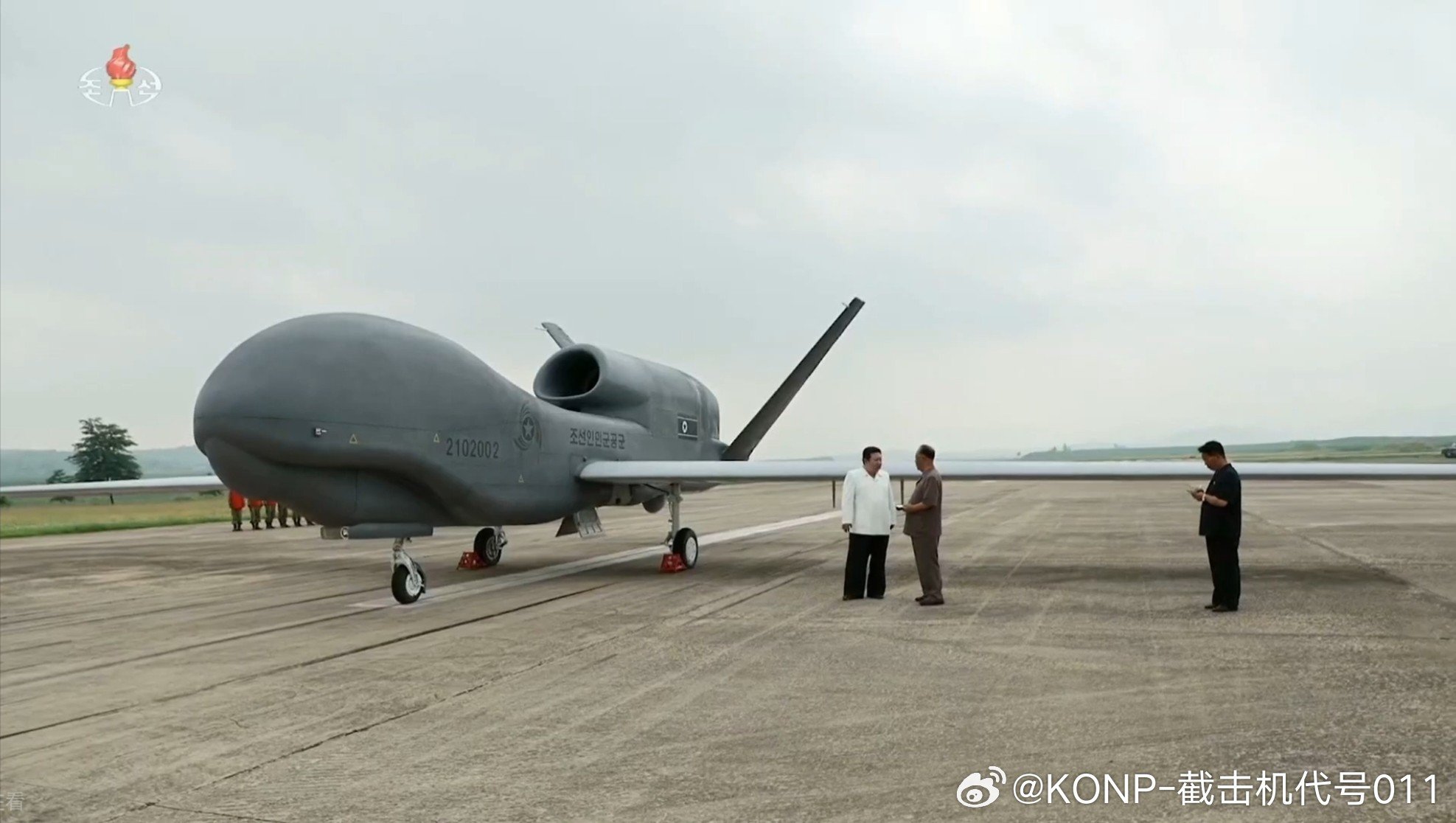
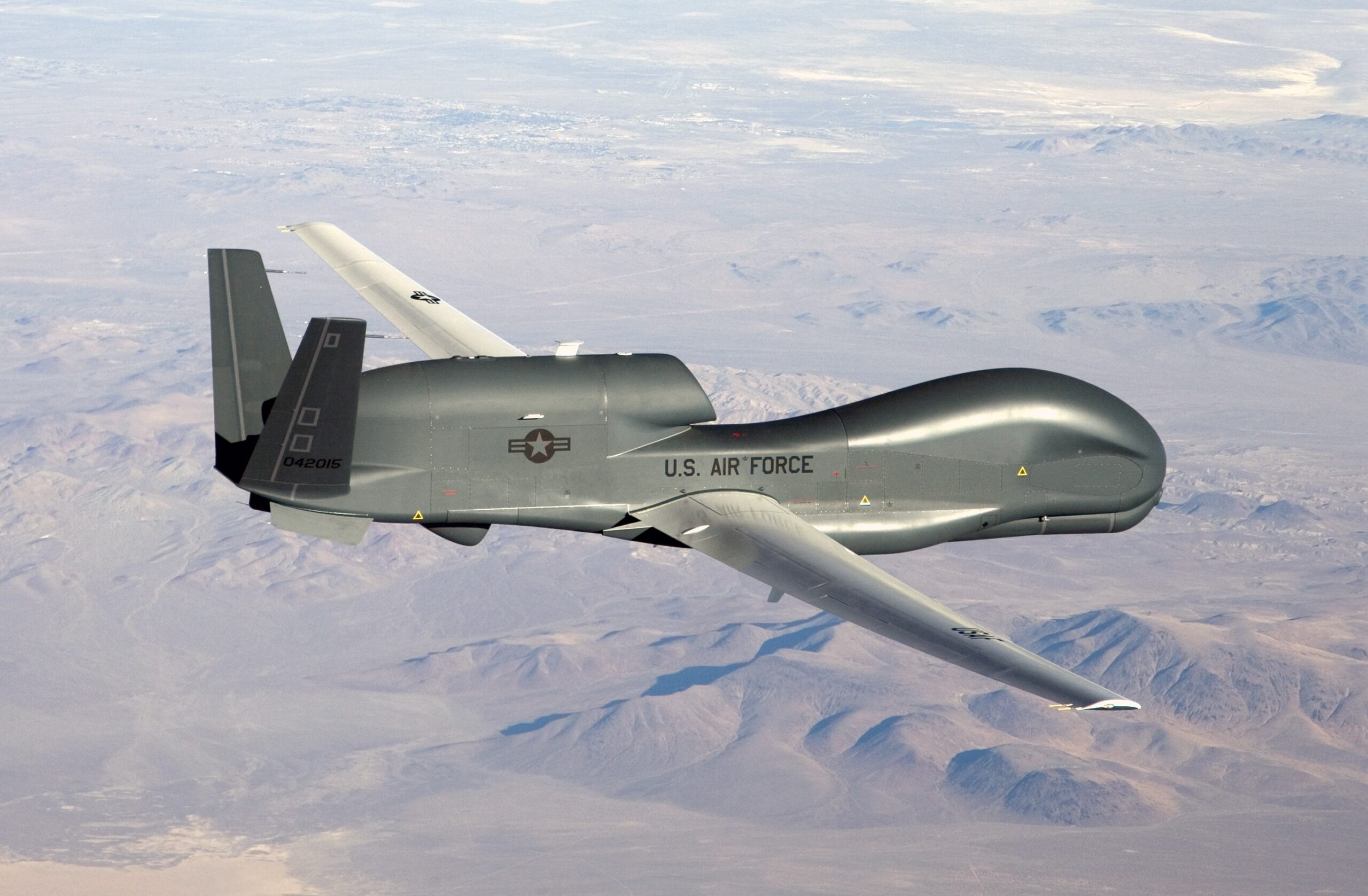
As for the Saetbyol-9, satellite imagery of it besides the Saetbyol-4 “indicated a wingspan of around 65 feet. The MQ-9 has a wingspan of 66 feet. While the turboprop-powered MQ-9 is used for both ISR and attack missions, it’s notable that the North Korean Reaper-type drone was displayed with two different types of missiles carried on six pylons below its wings, including one weapon that looks very similar to the U.S.-made AGM-114 Hellfire. This popular air-to-ground missile is used by the MQ-9, among many others.”
The brief video clip below also shows the drone launching a pair of Hellfire-lookalike missiles, although the authenticity of that clip is unclear.
Another issue we raised in our earlier report concerned the impossibility that North Korean industry can “actually replicate some of the more complex components and subsystems that lie at the heart of these UAVs’ capabilities. The high-technology sensors that the RQ-4 and MQ-9 series rely on are beyond North Korea’s reach, even with the benefit of espionage. That is not to say that sensors with significantly lower performance aren’t possible. The complex composite structures that make up these aircraft are another issue as is the engine technology. Simpler means of production and engines with less performance could result in significantly lower ceilings and ranges.”
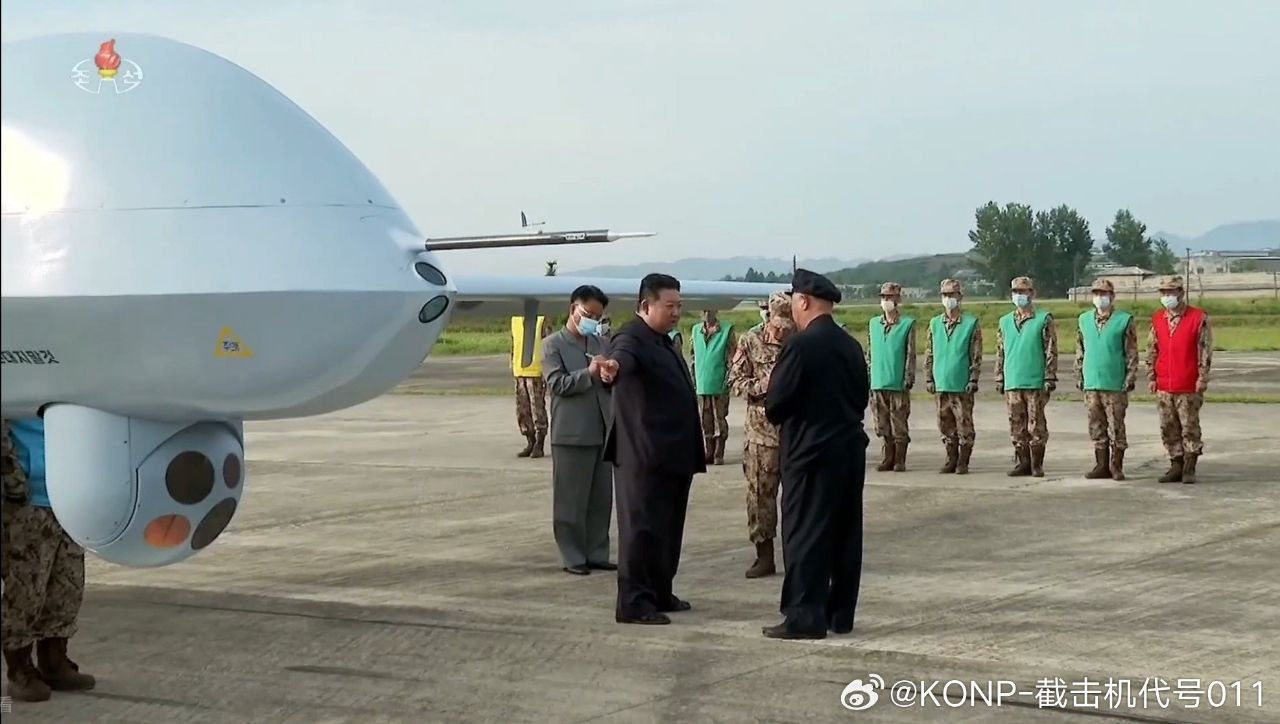
Still, even with these negative aspects factored in, these aircraft look remarkably impressive for North Korea to duplicate in flying form. It isn’t clear who helped them achieve such a feat, if anyone at all, but Iran did capture large parts of a U.S. Global Hawk derivative it shot down near the Strait of Hormuz. We also saw a Global Hawk-like tail structure being transported in Iran. You can read about what Iran recovered from the shoot down and the appearance of the tail section in this past article. But overall the airframes themselves are impressive in terms of what North Korean aerospace industry was able to accomplish and these are a massive leap forward for the country’s fledgling roster of unmanned capabilities.
Even with severely less capability, both in terms of performance and onboard sensors and control architecture, these drones could be useful in peacetime, although they would be first to be shot down during an actual conflict. The Reaper ‘clone’ could patrol South Korea’s borders, including the DMZ, while the Global Hawk-like jet could use its higher ceiling and longer endurance to look and listen deeper into South Korean territory for extended periods of time. Both could also be used in a naval patrol context as well, although they would likely be limited to line-of-sight connectivity for high-fidelity, real-time control and exploitation of gathered intelligence. This is a huge difference compared to the U.S., with both the RQ-4 and MQ-9 being highly enabled by high bandwidth satellite datalink capability.

Aside from showcasing the new drones, North Korea also claimed it test-fired “an intermediate-range solid-fuel ballistic missile [IRBM] loaded with a hypersonic maneuverable controlled warhead” on Jan. 14, according to state media outlet KCNA.
“The test-fire was aimed at verifying the gliding and maneuvering characteristics of intermediate-range hypersonic maneuverable controlled warhead and the reliability of newly developed multi-stage high-thrust solid-fuel engines,” KCNA reported, adding that the test was successful.

“The test-fire never affected the security of any neighboring country and had nothing to do with the regional situation,” according to KCNA. However, an IRBM, which has a range of between 3,000 and 5,500 kilometers [1,864 to 3,418 miles], would place the U.S. territory of Guam within range if fired from Pyongyang, the South Korean Yonhap news agency noted in its story about the test. Kim has threatened to fire an IRBM near Guam in the past and North Korean IRBMs have been a top reason why a THAAD anti-ballistic missile battery has been deployed to Guam for years.
Sunday’s test comes after KCNA reported on engine trials for a new solid-fuel intermediate-range ballistic missile (IRBM) conducted at separate facilities on both coasts last November, according to NKNews.org.
South Korea’s Joint Chiefs of Staff (JCS) detected the latest launch at around 2:55 p.m. KST on Sunday, “saying it appeared to be an intermediate-range ballistic missile (IRBM) that flew around 621 miles (1,000 km) into the Sea of Japan (East Sea),” according to NKNews.org. North Korea tests missiles at extreme altitudes in order to stay closer to the peninsula. The performance during these tests can be extrapolated into a shallower, down-range optimized, operational trajectory.
While North Korea has recently developed other solid fuel missile designs, including recently demonstrating a solid-fuel ICBM for the first time, having an IRBM with this capability is especially noteworthy. They would be among the most threatening missiles to U.S. interests during a conflict. Solid fuel capability means they can be erected and launched far quicker than their liquid-fuel progenitors. This makes them much harder to strike preemptively and gives less time for realizing a an attack may be imminent. As such, solid fuel ballistic missiles increase the North Korean ballistic missile arsenal’s survivability, effectiveness and flexibility, among other advantages. North Korea has been on a quest to develop solid fuel designs for years and has made remarkable progress in this area of rocketry since it began a campaign of rapid iterative missile testing in 2016.
The hypersonic boost glide vehicle (BGV) supposedly mounted atop the missile is a whole other issue. North Korea claimed it tested a BGV in 2021. It has since claimed to have tested similar vehicles multiple times atop various missiles, but putting one on a solid-fuel IRBM would drastically increase the value of such a weapon.
Yet much is still unknown about the viability of North Korea’s BGV designs and if they would even withstand the voyage to their target area. The technologies behind hypersonic flight, and especially those needed for dynamically maneuvering at velocities in excess of Mach 5, are very hard to master. If North Korea can make it work, especially aboard a solid fuel IRBM, that would be a major development that would significantly complicate defending against incoming North Korean attacks.
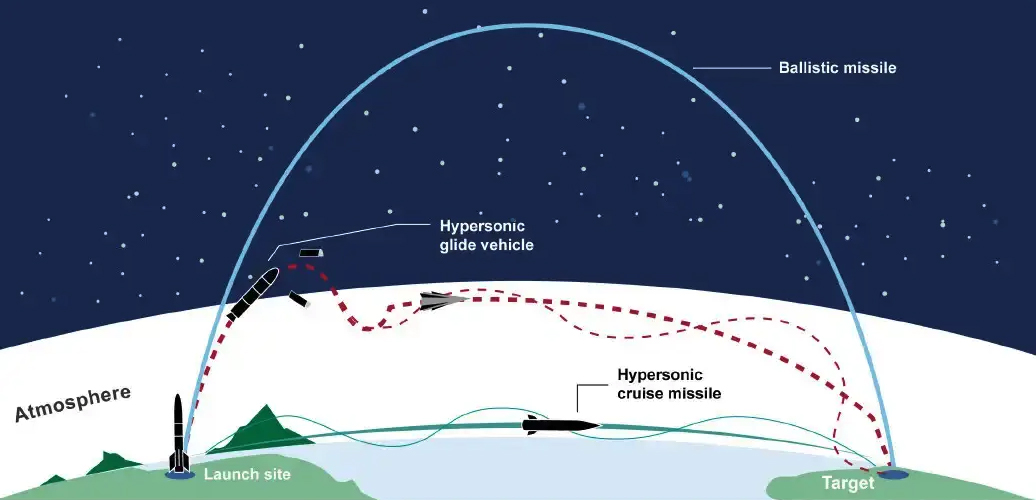
There is also some debate over if at least some of these conical, finned, hypersonic vehicles are really just maneuvering reentry vehicles that are less capable of higher degrees of maneuverability. Hypersonic terminal velocities are not abnormal for ballistic missiles, especially IRBMs, so the vehicle would be hypersonic, regardless, but not having the same capabilities of a HBGV. Still, this would be a troubling development, but nothing as big of accomplishment as making an operationally relevant hypersonic BGV.
Regardless, Kim’s inspection of the advamced drones and the solid fuel missile test come at a perilous time on the Korean Peninsula. On Monday, he called for a constitutional amendment to change the status of South Korea as a separate state and warned that while his country doesn’t seek war, it didn’t intend to avoid it, KCNA reported, according to Reuters.
We will continue to monitor North Korean’s weapons programs and provide updates when warranted.
Contact the author: howard@thewarzone.com
